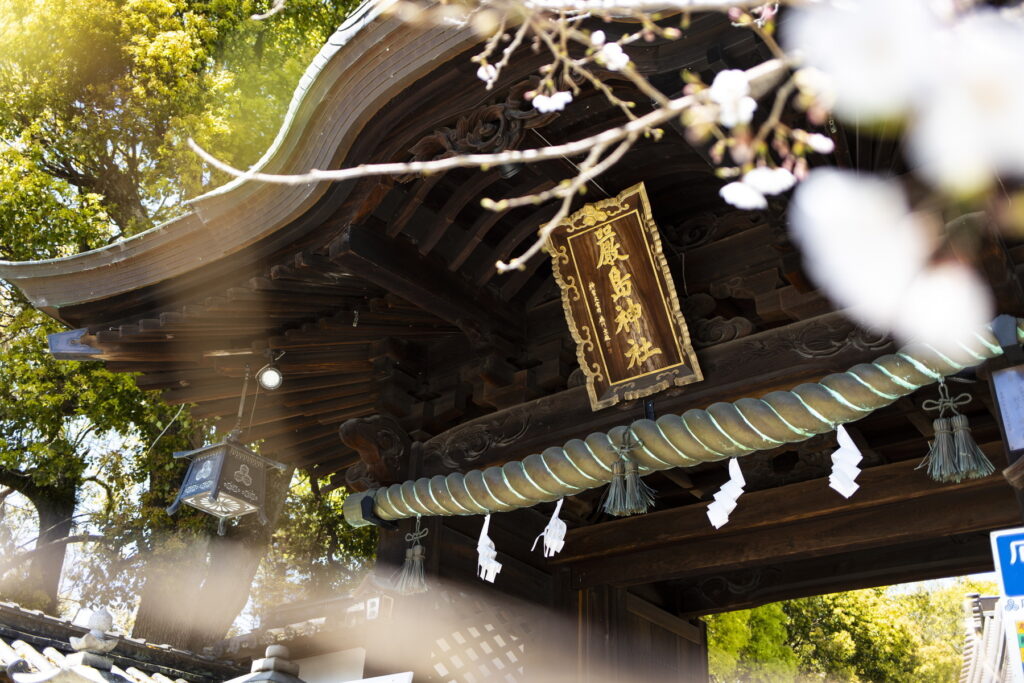
Mitsu Itsukushima Jinja is an ancient Shinto sacred space, founded over 1400 years ago and enshrining three female kami with a special connection to the sea and travel. All are welcome to visit and experience this central part of Japanese culture.
The Kami
The three kami enshrined at Mitsu Itsukushima Jinja are the three female kami of Munakata:
・Itsukishima Hime-no-Mikoto
・Tagitsu Hime-no-Mikoto
・Tagori Hime-no-Mikoto
These kami are also known as “Michi Nushi no Muchi”, which means “the most august rulers of travel routes”, and people pray to them particularly for safe travel, whether by land, sea or air, and for protection from dangers that might come by one of those routes.
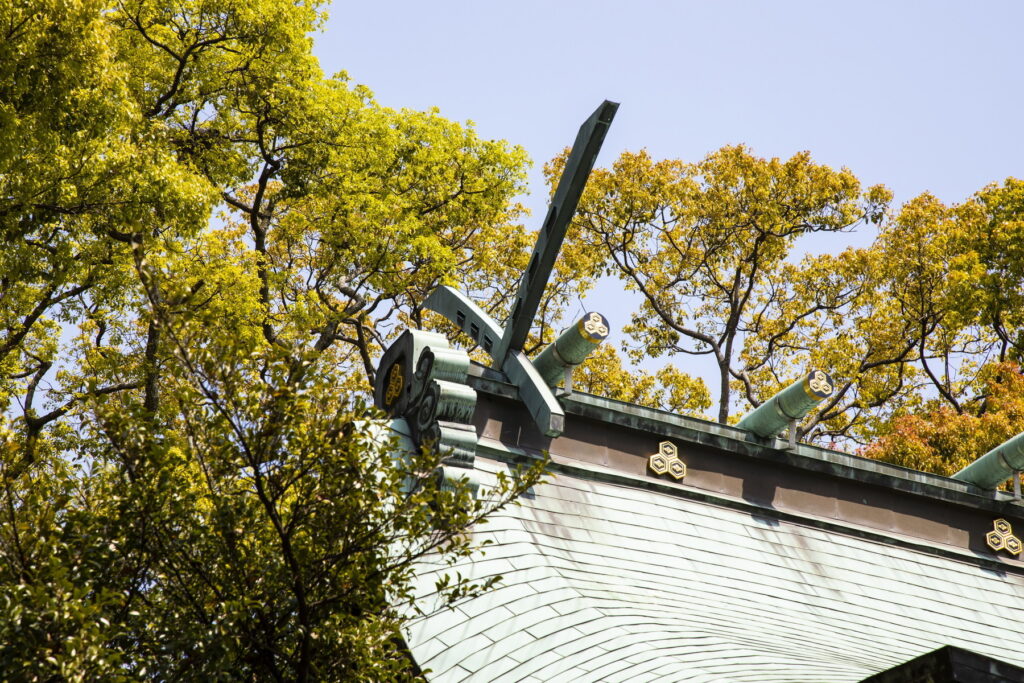
Paying Your Respects
You should pay your respects to the kami when you visit the jinja. The video shows general instructions for any jinja.
To pay your respects, go to the front of the jinja, and ring the bell. Offer a coin or two in the box if you wish.
- Bow twice, deeply.
- Clap twice.
- At this point, you may offer thanks or make a request if you wish.
- Bow once, deeply.
Childcare and Contests
As the kami of this jinja are female, people have long prayed to them for the safe and healthy growth of their children, and for support in bringing them up.
The kami are also known as kami of contests, and the jinja conducts prayers for victory on behalf of Ehime FC and local school sports teams.

-History-
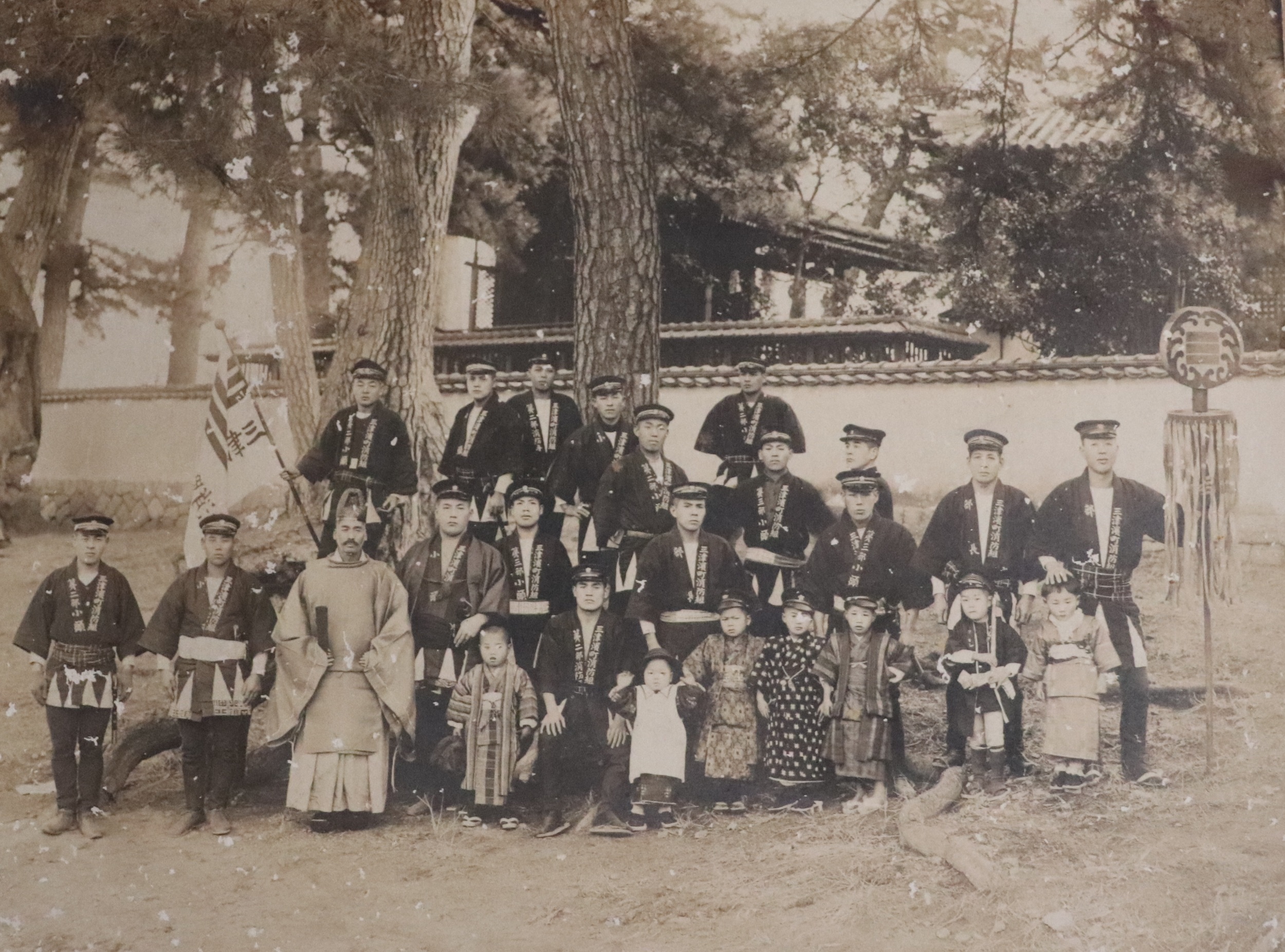
Over 1400 years of history
These three kami were originally enshrined at Munakata Taisha in Kyushu, on the sea route between Japan and the continent, and their divided spirits were brought here from that jinja in the late sixth century. In the early eighth century, the same kami were brought again from Itsukushima Jinja in Hiroshima Prefecture, where they had also been enshrined, and the jinja takes its name from this enshrinement.
In the thirteenth century the jinja was venerated by the leader of naval forces in the Seto Inland Sea, and in the fourteenth century the first Ashikaga Shogun granted land to the jinja after he escaped from danger to arrive at Mitsu port. However, the jinja buildings were destroyed in battles in the early seventeenth century, during the foundation of the Tokugawa Shogunate. They were rebuilt on their current site in 1602.
Under the Tokugawa Shogunate, the lords of local domains were required to travel between their domains and the capital of Edo (modern Tokyo) every year. The lords of Matsuyama domain would visit this jinja to pray for a safe journey, peace in their domain, and success with honour before taking ship for Edo at Mitsu port.

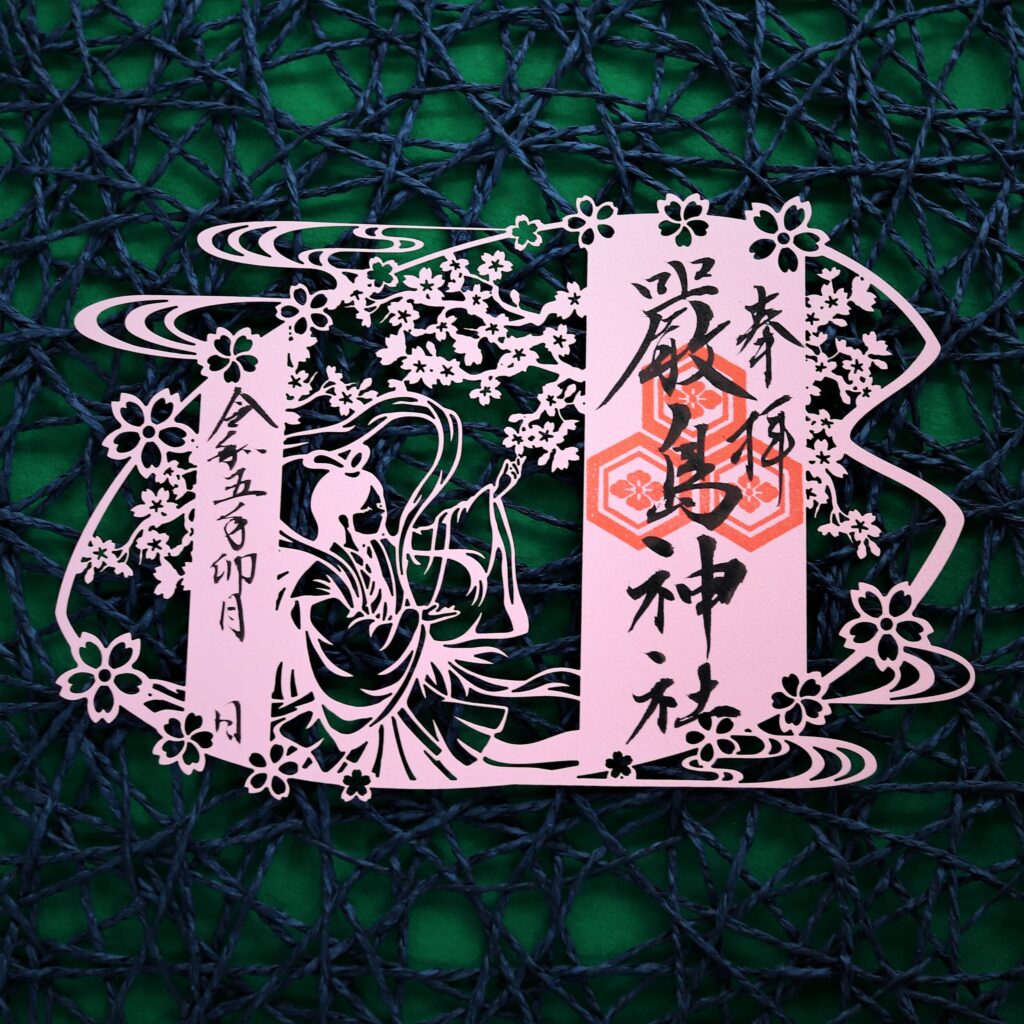
Goshuin
Goshuin are red ink stamps that mark your visit to a jinja.
Mitsu Itsukushima Jinja creates new goshuin every month, and they are available for an offering of ¥1000 each.

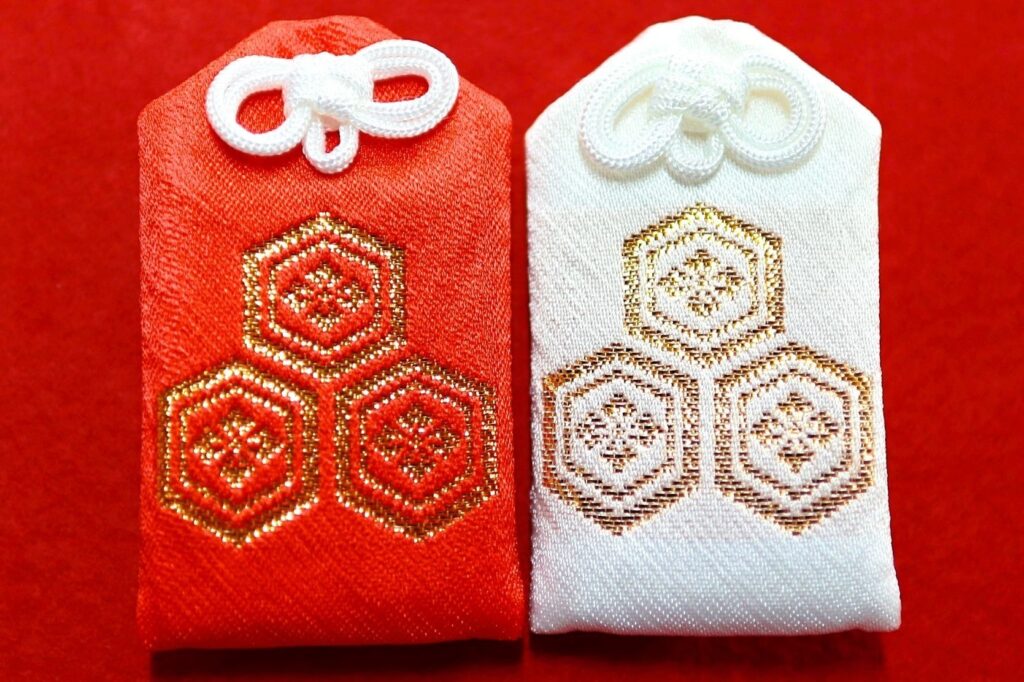
Omamori
Omamori are amulets that carry the blessings of the kami. There are several kinds of omamori available at the jinja, for offerings of a few hundred yen.
Good health (adult and child versions): ¥600
Preventing Bad Fortune: ¥800
Good Health and Fortune: ¥600
Good Relationships: ¥800
Successful Study: ¥600
Passing Exams: ¥600
Success at Work: ¥600
-In the Precincts-
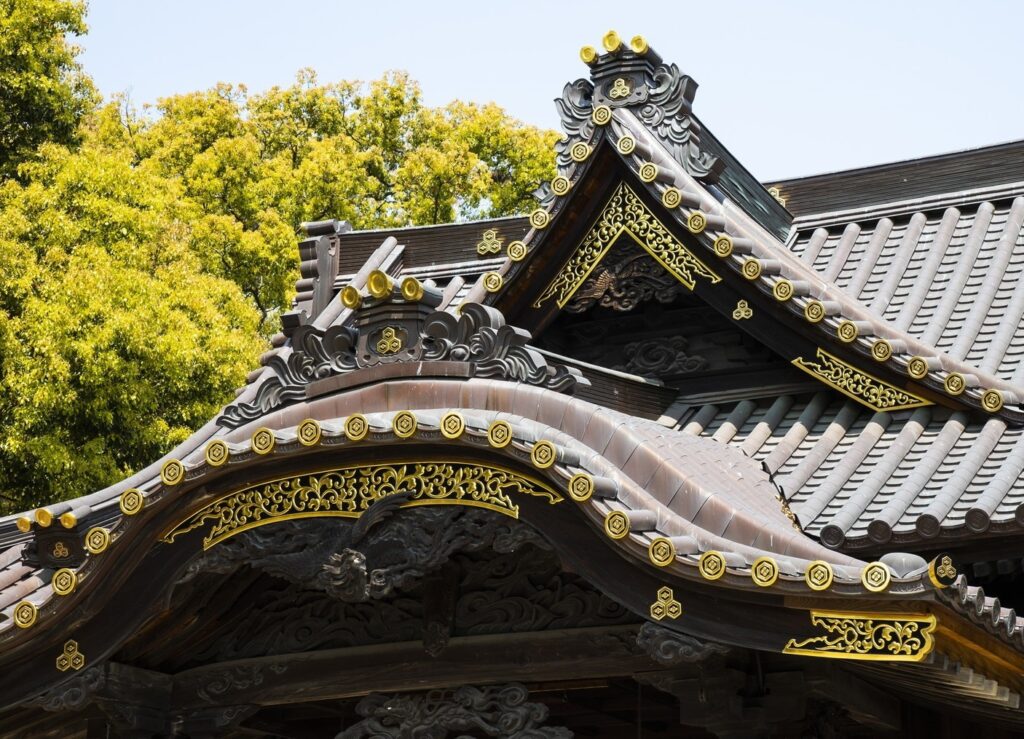
The Prayer Hall Roof
The prayer hall used to be roofed in ceramic tiles, but in 2015 it was re-roofed in copper sheets. These sheets were designed to reproduce the shape of ceramic tiles, including their thickness, which is unusual.
Shime-ishi
These two stone pillars support a shimenawa, a rope marking the boundary of a sacred space. They were set up in the 1880s by Miwada Beizan, a Shinto priest and famous calligrapher. The characters inscribed on the pillars can be read “nenpojinraku”, and mean “People delight in a rich harvest”. They are said to be one of the largest and finest of Miwada’s works, and it is reported that Miwada was good friends with the chief priest of Mitsu Itsukushima Jinja at that time.
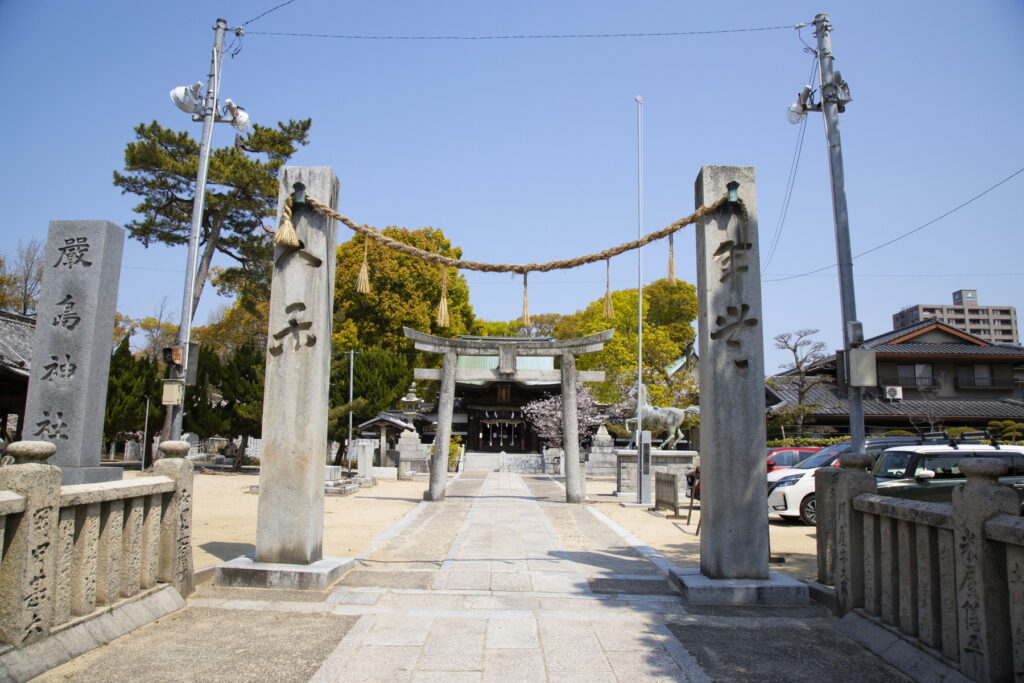
-Access-
Mitsu Itsukushima Jinja
ADDRESS:791-8063 Ehime, Matsuyama, Kandamachi 1-7
PHONE:089-951-1471
FAX:089-951-2220
The jinja is about a seven minutes walk from Mitsu Station, and about twenty minutes from the cruise ship docks.
![[松山市] 三津厳島神社【公式】|御朱印・各種御祈祷](https://itsukusima.com/wp-content/uploads/2025/07/original-3.jpg)




